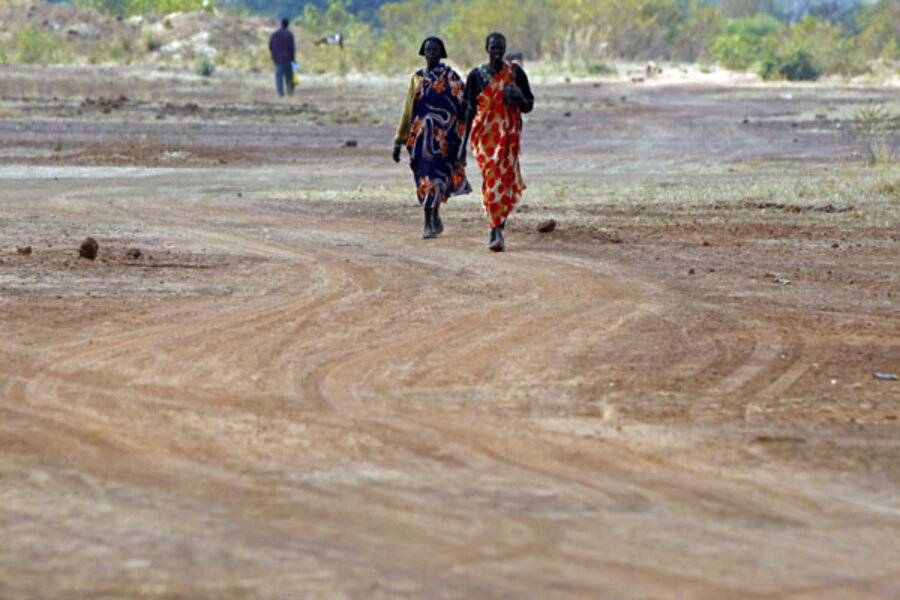George Clooney-backed satellite project to monitor volatile Sudan
Loading...
In what may be the most ambitious project of its kind, the United Nations and human rights advocates in the US are turning to satellite images and the Web to monitor the border between northern and southern Sudan, as the south prepares for a referendum on Jan. 9 that could split the country in two.
The concern: If the referendum in southern Sudan supports independence for the oil-rich, largely Christian region, the country once again could dissolve into a brutal civil war.
By combining on-the-ground reports with a nearly daily review of commercial-satellite images, the project's participants say they hope to head off potential large-scale human rights abuses, should a conflict break out.
"We want to let potential perpetrators of genocide and other war crimes know that we're watching," said actor George Clooney, a co-founder of Not on Our Watch, a human rights group funding the effort, in a statement. "It's a lot harder to commit mass atrocities in the glare of the media spotlight."
National intelligence services in the United States and for other major countries are widely acknowledged to have access to more-detailed images than remote-sensing companies can provide. But those images tend to remain classified and out of the public spotlight.
The new effort announced Wednesday – the Satellite Sentinel Project – will post its images on a publicly available website, in hopes of mobilizing public opinion in ways that pressure governments to respond to any abuses the effort detects, participants say.
The notion of using commercial-satellite images to document destruction of villages, forced migrations, and even inequities in government support for housing across ethnic or religious divides is relatively new.
Five years ago, the MacArthur Foundation gave a grant to the American Association for the Advancement of Science to develop ways to help human rights groups monitor conditions in hard-to-access countries and regions.
Since then, the science organization has worked on several smaller-scale projects with groups such as Amnesty International (AI), notes Lars Bromley, who spearheaded the effort for the AAAS and now heads similar efforts at the UN's Operational Satellite Applications Program.
In 2007, the AAAS worked with AI on a project known as Eyes on Darfur, monitoring 12 villages. Over the duration of the project, he says, nine remained untouched, while the other three were affected by violence but not as badly as villages elsewhere.
"Whether that was due to our project or not we can't say," Mr. Bromley acknowledges. "But it was a positive experience."
Indeed, gauging the effectiveness of a project like this can be difficult, acknowledges David Yanagizawa-Drott, an assistant professor of public policy at Harvard University's Kennedy School of Government.
Dr.Yanagizawa-Drott will be evaluating the Satellite Sentinel program's results under the aegis of the Harvard Humanitarian Initiative, which also is contributing satellite-analysis expertise to the effort.
"To address the big question – whether or not the existence of Satellite Sentinel prevents a genocide – is going to be very hard to show," he says.
Still, there are other tests that can address the project's effect on public awareness and perhaps on public policy, he adds.
One key difference between Satellite Sentinel and past, smaller scale projects is its attempt to prepare in advance and work with nearly "real time" images.
Many of the early efforts involved comparing images whose before and after views are separated by a span of several years. With the Satellite Sentinel Project, analysts will have access to fresh images every 24 to 36 hours.
Not On Our Watch is providing $750,000 to get the effort going. Web giant Google and website builder Trellon are providing the Web interface and mapping information. Bromley's office at the UN and researchers with Harvard's Humanitarian Initiative will be analyzing the images. Not On Our Watch and a second human rights group, the Enough Project, are serving as clearinghouses for on-the-ground information coming in from Sudan – information that will help in interpreting the images. And the two groups will spearhead efforts to bring information the project garners to public attention.
"Deterrence is our objective," says John Pendergast, co-founder of the Enough Project. "We want to contribute to the prevention of war between North and South Sudan. If war does ignite, we want to hold accountable those responsible, and hopefully deter human rights crimes that would be committed in the context of war."





